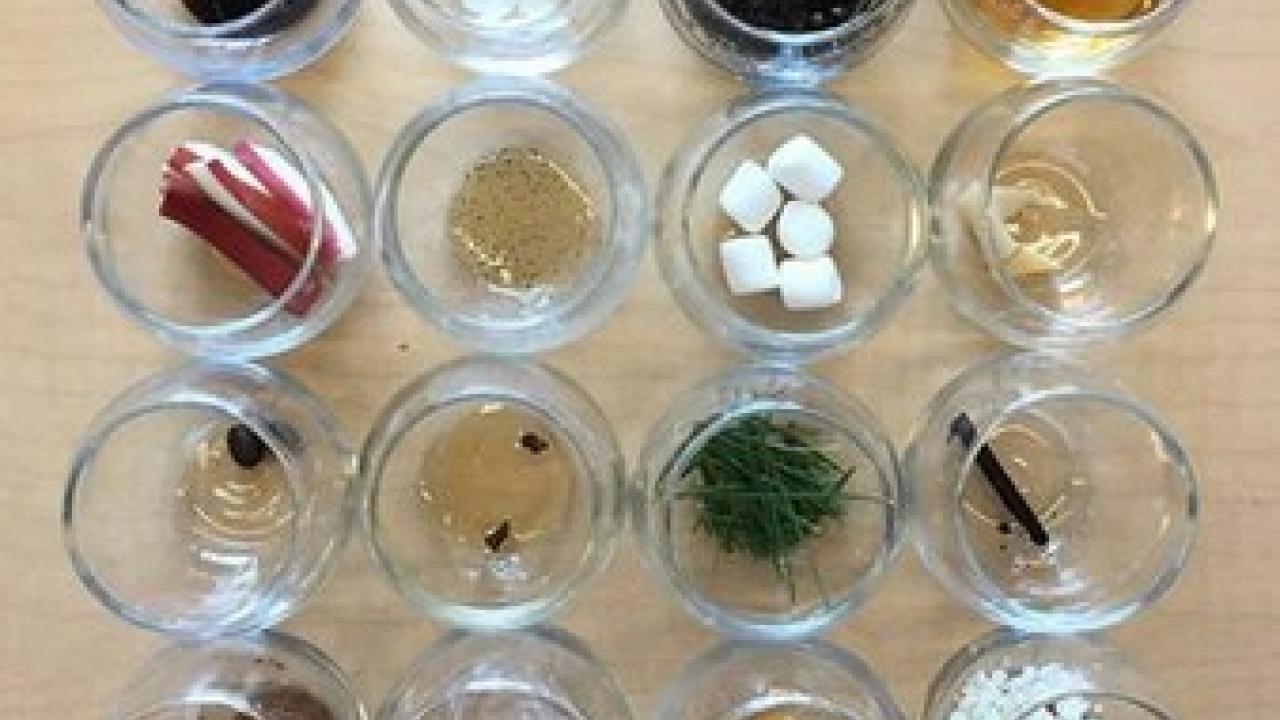
UC Davis is the Place to Bee to Learn About and Experience Honey!
For the past nine months, the Honey and Pollination Center at the Robert Mondavi Institute, UC Davis, has been studying the many facets of honey: flavor, aroma, color, pollen and nutrition. The Center has established and trained a honey sensory panel within the UC Davis Department of Food Science and Technology. After an initial training, the panel tasted and scored three varietal honeys with samples produced from across the country. Each honey’s score was dependent on factors like aroma, flavor, and color—the center’s goal is to create a description of each varietal honey’s unique characteristics.
Why only three honeys? This is a beginning. Each honey featured in the program has five samples selected from across the country. Each of the five samples are tasted in a series of screenings to ensure consistent responses. Gas chromatography has been used assess their volatile aroma profiles. Nutritional analysis of each honey is also underway, and will establish a baseline criteria for those minerals, chemicals, and amino acids (etc.) that are present in the honeys. And, finally, pollen samples have been taken to set baselines for tracing the pollen source in the varietal honeys which we have been studying. Once completed, this study will lay the groundwork for applying the same techniques to additional varietal honeys throughout the United States.
This study, the first of its kind in the United States, will set the backdrop for the Honey Sensory Experience: An Introduction, to be held November 10 and 11, 2017. Attendees will learn how to taste honey, experience a broad selection of varietal honey and learn from the researchers at UC Davis.
Center director, Amina Harris explains “There are about 300 varietal honeys here in the United States. Many aren’t produced each year. And some years actually have a better crop than others. With the growing interest in varietal honey throughout the country, the Center’s goal is to help consumer’s understand what each varietal honey should really taste like.”
Though most of the honey produced in the country is a cross section of floral sources, that is a cross section of floral sources, many are varietal, some commanding very high price points. Well-known varietals include orange blossom and clover honeys, though these are rarely pure varietals. “According to current honey labeling laws, the varietal listed on the label need only be the predominant floral source. Simply, a blended honey of 23% alfalfa, 25% wildflower and 25% cotton with 27% orange blossom can be labeled Orange Blossom Honey. Swap out the orange blossom for clover and you have a new varietal!” she explained at September’s Western Apiculture Society conference
The Honey and Pollination Center is at the forefront of honey sensory research, and developed the first-ever Honey Flavor and Aroma Wheel. The wheel has been featured on NPR, in Smithsonian, and at tastings and specialty food conferences across the country.
Interest in honey is on the rise, and consumers are actively looking for intriguing varietals. The center’s Honey Sensory Experience is the perfect opportunity for consumers looking to better-understand how honey is developed—from the moment the honey bee collects the nectar, until the honey is on the supermarket shelf. The two-day program brings together a group of expert presenters who will guide participants through the many nuances of honey.
This two day program brings together a group of exceptional presenters to explain all the nuances from nutrition to flavor to cooking!
The course, a two day immersion, features teachers:
Orietta Gianjorio: Orietta is a member of the Italian Registry of Honey Sensory Experts, in addition to being a professional taster of olive oil, wine and chocolate.
Hanne Sivertsen, PhD from the University of Norway: Hanne is a sensory scientist who trains and organizes panels in the sensory labs at UC Davis. She has been training our first group of honey tasters for our fledgling research program.
Amina Harris: Director of the Honey and Pollination Center of the Robert Mondavi Institute, UC Davis. Amina brings to the program over 35 years of experience in the world of varietal honey. In addition to directing the Center’s program and developing its courses, she is co-owner of Z Specialty Food with her husband and son.
Amy Myrdal Miller, Nutritionist: As owner of Farmer’s Daughter ® consulting, Amy works with corporate clients from across the country. Previously she worked for the Culinary Institute of America, the California Walnut commission and others.
Mani Niall: Chief cupcake froster at Sweet Bar Bakery in Oakland, CA. Mani, an accomplished and entertaining chef, has written many books including ‘Covered in Honey’ and previously was a spokesperson for the National Honey Board.
Joyce Schlacter: With a degree in Food Safety and quality, Joyce has spent many years in the honey industry traveling the world and researching adulteration while believing in the promotion of truly pure and natural honey.
In addition, UC Davis staff and faculty will give updates on our continuing research into nutrition, aroma and pollen analysis.
The course, which includes breakfast and lunch each day is $575 until October 10th. After that, the fee rises to $625.
